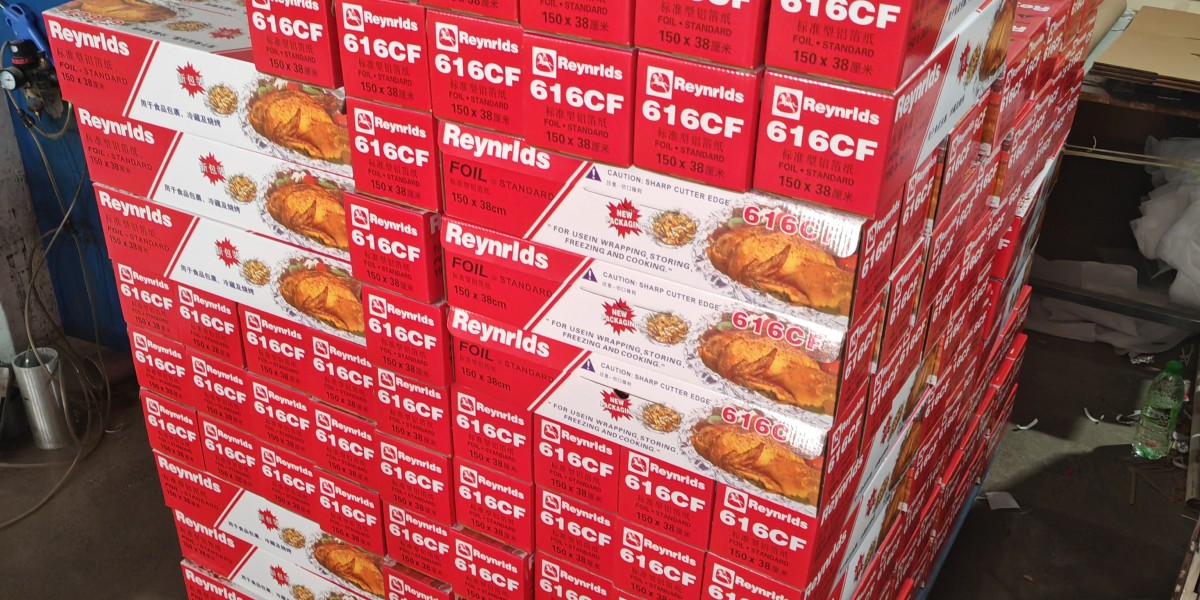Introduction: The Wonders of Aluminum Foil in the Kitchen
Aluminum foil is a true kitchen MVP. With its versatility, it effortlessly wraps up everything from leftovers to holiday leftovers, and even serves as an essential tool for roasting, baking, and grilling. But what about freezing food? Can aluminum foil withstand the chill of the freezer while preserving the integrity of your meals? The answer is yes, but there are some important details to keep in mind to ensure your frozen food is safe, fresh, and flavorful.
What Is Aluminum Foil?
Aluminum foil, a thin sheet of metal, is crafted from aluminum and has been a kitchen essential for decades. It’s lightweight yet durable, highly malleable, and offers excellent barrier properties against heat, moisture, and light. This combination of features makes it ideal for cooking, storing, and preserving food. Its smooth, shiny surface reflects heat, while the matte side is perfect for wrapping and sealing, offering an array of uses in food preparation and storage.
Can You Freeze Food in Aluminum Foil?
Freezing food in aluminum foil is not only possible, it’s a practical and efficient method for long-term storage. Unlike traditional plastic wrap, aluminum foil has a unique ability to protect food from both air and moisture, preventing freezer burn and helping maintain the food’s flavor and texture. However, some considerations should be made before you wrap up your meals for the deep freeze. Understanding how aluminum foil interacts with frozen food is essential for successful freezing.
How Aluminum Foil Works in Freezing
Aluminum foil works as a protective barrier for your food when freezing by locking out the harmful elements of the freezer: air, moisture, and light. Its insulating properties keep food protected from temperature fluctuations, which is particularly important for preventing freezer burn. Freezer burn occurs when food is exposed to air and moisture, leading to dehydration and flavor loss. Aluminum foil, when tightly wrapped, creates an airtight seal that minimizes exposure to air, preserving the food's quality.
Types of Food That Freeze Well in Aluminum Foil
Not all foods are created equal when it comes to freezing, but there are many types that thrive in aluminum foil:
- Meats and Poultry: Chicken breasts, steaks, pork chops, and fish fillets all freeze beautifully when wrapped in aluminum foil. Ensure the foil is wrapped tightly around the meat to prevent air exposure.
- Vegetables and Fruits: While most fruits and vegetables should be blanched before freezing to preserve color and texture, they freeze well when wrapped in foil after the blanching process.
- Leftovers and Baked Goods: Casseroles, stews, and baked goods like muffins, cookies, and bread can be neatly stored in aluminum foil, preserving freshness while saving space in your freezer.
Preparing Food for Freezing in Aluminum Foil
Before freezing food in aluminum foil, proper preparation is key. First, ensure the food is completely cooled. Freezing hot food can cause condensation inside the foil, leading to ice crystals that can degrade the food. Next, portion your food into manageable sizes. This not only makes it easier to defrost just what you need, but it also ensures that the food freezes evenly. Once portioned, tightly wrap the food in aluminum foil, ensuring no air pockets remain, and use a second layer if necessary for extra protection.
Is Aluminum Foil Better Than Plastic Wrap for Freezing?
Both aluminum foil and plastic wrap serve different purposes in food storage, but when it comes to freezing, aluminum foil has the upper hand. While plastic wrap is great for creating a tight seal, aluminum foil offers a more reliable barrier against both air and moisture. Foil is particularly effective for preventing freezer burn, while plastic wrap is prone to tearing and may not always provide an airtight seal. For best results, some people opt to use both: wrapping food first in plastic wrap and then covering it in aluminum foil.
How to Prevent Freezer Burn Using Aluminum Foil
Freezer burn is a common concern when freezing food, and aluminum foil is one of the best defenses against it. To prevent freezer burn, ensure that the food is wrapped tightly with no air gaps. Double-wrapping with aluminum foil provides an extra layer of protection. It's also important to press out as much air as possible from the foil before sealing it. Using an airtight container or bag in addition to the foil can further protect your food from the harsh elements of the freezer.
Can Aluminum Foil Affect the Taste or Texture of Frozen Food?
When used correctly, aluminum foil does not affect the taste or texture of frozen food. In fact, it helps preserve both by preventing dehydration and the oxidation that causes flavor degradation. However, if the food is improperly wrapped and exposed to air, the foil may fail to protect the food, leading to flavor and texture loss. For best results, ensure the foil is tightly sealed and free of wrinkles.
Long-Term Freezing: How Long Can You Keep Food in Aluminum Foil?
Freezing food for long periods is possible with aluminum foil, but there are guidelines to follow. Generally, most foods should not be stored in the freezer for longer than 6 months to a year, depending on the type of food. Meats and poultry can last up to 6 months, while baked goods may last up to 3 months. After this time, the quality of the food begins to degrade. Always label your wrapped items with the date of freezing to track their shelf life.
Thawing Food Wrapped in Aluminum Foil
Thawing frozen food wrapped in aluminum foil requires careful handling to prevent contamination and ensure the food heats evenly. The best method is to thaw food in the refrigerator overnight. This allows the food to thaw slowly and safely. If you’re in a hurry, you can use the defrost function on your microwave, but be sure to remove the foil before microwaving. It’s never advisable to cook food directly from the foil unless specified by the recipe.
The Environmental Impact of Freezing with Aluminum Foil
Aluminum foil is recyclable, but it’s important to note that not all types of foil are accepted by recycling programs. While it is an excellent choice for food storage due to its durability, care should be taken when disposing of used foil. Where possible, opt for foil that has been used minimally, and ensure that it is clean and free from food residue before recycling. Reducing single-use aluminum foil can help reduce waste in the long term.
What Are the Alternatives to Freezing Food in Aluminum Foil?
While aluminum foil is a top choice for freezing, there are other materials that can be used, each with its own pros and cons. Plastic freezer bags or vacuum-sealed bags are alternatives that are particularly effective at removing
air and preventing freezer burn. These bags also help to keep the food organized, with the added benefit of taking up less space than bulky foil-wrapped items. However, unlike aluminum foil, plastic bags don’t provide as much protection from light or external factors. Glass containers and freezer-safe plastic containers are another option, though they take up more space in the freezer. Ultimately, the best material depends on the specific food being stored and the freezing method you prefer.
Common Mistakes to Avoid When Freezing with Aluminum Foil
While aluminum foil is a versatile tool for freezing food, improper wrapping or handling can result in less-than-ideal storage conditions. Some common mistakes include:
- Leaving Air Gaps: Not pressing out the air before sealing the foil can result in freezer burn. Always ensure the foil is snug against the food with minimal air.
- Overcrowding the Freezer: Freezers need air circulation to work efficiently. Overcrowding can lead to uneven freezing and potential thawing. Ensure that food is spaced out for optimal freezing.
- Using Thin Foil: Not all aluminum foil is created equal. Thinner foil may tear or develop holes, compromising the food’s protection. Opt for heavy-duty foil when freezing.
The Benefits of Freezing Food in Aluminum Foil
Freezing food in aluminum foil offers numerous benefits:
- Space-Saving: The pliable nature of aluminum foil means it can conform to the shape of the food, making it easier to store in tight freezer spaces.
- Long-Term Storage: When wrapped correctly, aluminum foil can keep food in the freezer for months, maintaining its quality and flavor.
- Ease of Use: Wrapping food in foil is quick and straightforward, making it an ideal choice for busy kitchens or meal prep.
How to Store Aluminum Foil for Maximum Effectiveness
To get the most out of aluminum foil when using it for food storage, proper storage is essential. Keep foil rolls in a cool, dry place to prevent the material from becoming brittle. Avoid storing foil in places where it could come into contact with moisture, as this can affect its sealing properties. Additionally, be mindful not to crumple or tear the foil prematurely—doing so can lead to inefficient wrapping when the time comes to store food.
The Pros and Cons of Freezing in Aluminum Foil
There are undeniable advantages to using aluminum foil for freezing food:
Pros:
- Durable Protection: Keeps air, moisture, and light away from food.
- Convenient: Ideal for wrapping, portioning, and stacking food in the freezer.
- Versatile: Works well with a wide range of food types.
Cons:
- Single-Use: Aluminum foil can be difficult to reuse if heavily soiled with food.
- Not Perfect for Liquids: Aluminum foil is not the best option for storing soups or broths as it may leak.
How to Safely Handle and Prepare Frozen Food Wrapped in Aluminum Foil
When handling frozen food wrapped in aluminum foil, make sure to follow proper food safety protocols to avoid contamination:
- Wash Your Hands: Before handling frozen food, always wash your hands thoroughly to prevent bacteria transfer.
- Defrost in the Refrigerator: When thawing food, always do so in the refrigerator, allowing it to thaw gradually. This prevents harmful bacteria from growing.
- Reheat Properly: If you're reheating food directly from the freezer, ensure it reaches a safe internal temperature to kill any bacteria.
Aluminum Foil vs. Other Freezer-Safe Materials: A Comparison
When choosing a material for freezing, consider the pros and cons of each option:
- Aluminum Foil: Great for a variety of foods, offers durability, and prevents freezer burn. Best for dry goods and solid foods.
- Plastic Freezer Bags: Provide excellent air-tight sealing, take up less space, but can tear over time.
- Vacuum-Sealed Bags: Offer the best protection from air, ensuring long-lasting freshness, but require a vacuum-sealing device.
- Glass Containers: Suitable for liquids and meals that need to be microwaved directly from the freezer. However, they take up more space.
Conclusion: Is Aluminum Foil the Right Choice for Freezing?
Aluminum foil is undeniably one of the best choices for freezing food, offering a practical, cost-effective, and efficient method for preserving the freshness, flavor, and texture of your meals. While it’s important to use the right wrapping techniques and avoid common mistakes, its benefits—such as durability, space-saving, and freezer burn protection—make it an ideal solution for most foods. Whether you're freezing meats, vegetables, or even baked goods, aluminum foil can provide the reliable seal you need for long-term storage.
In conclusion, with proper handling and wrapping, aluminum foil can easily become your go-to material for freezer storage, ensuring your food stays delicious and ready for use whenever you need it.









